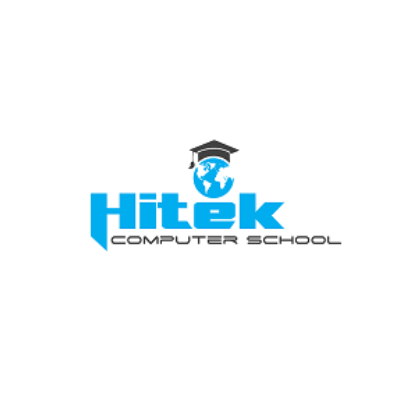Get Certified to Protect Little Lives with Pediatric First Aid Certification in Hollywood, FL
Accidents can happen at any time—especially when children are involved. From playground tumbles to allergic reactions and choking hazards, knowing how to respond quickly and effectively is essential. That’s why getting your Pediatric First Aid Certification in Hollywood, FL is so important for parents, teachers, babysitters, daycare providers, and anyone who cares for children.
At Palm Over Palm First Aid & CPR Corp, you’ll receive expert training that equips you with the critical skills needed to handle medical emergencies involving infants and children, confidently and calmly.
Why Pediatric First Aid Certification is a Must-Have
Children require special care during emergencies, and their smaller bodies and developing systems mean that adult first aid techniques aren’t always appropriate. Pediatric First Aid Certification teaches you how to recognize, respond to, and manage medical emergencies specific to children and infants.
Skills Covered Include:
Wound care and bleeding control
Choking relief for infants and children
Recognizing and treating allergic reactions
CPR and AED use for infants and children
Managing fevers, seizures, and asthma attacks
Handling head injuries and broken bones
These vital skills ensure you’re prepared to take immediate action until professional help arrives.
Who Should Get Pediatric First Aid Certified?
Preschool and daycare staff
Babysitters and nannies
Parents and grandparents
Teachers and school aides
Camp counselors and sports coaches
Healthcare professionals working with children
Even if you’re not a caregiver by profession, having this certification empowers you to protect the children in your life.
Why Choose Palm Over Palm First Aid & CPR Corp?
When it comes to pediatric emergency training, you need a provider you can trust. Palm Over Palm First Aid & CPR Corp, based in Hollywood, FL, is a leading provider of first aid and CPR training courses in South Florida.
Why locals choose Palm Over Palm:
American Heart Association & Red Cross-approved certifications
Friendly, certified instructors with real-world experience
Flexible class schedules, including evenings and weekends
On-site group training available for schools and childcare centers
Bilingual instruction (English & Spanish)
Certification valid for 2 years
Their hands-on training approach makes learning easy and practical, even for first-time participants.
Convenient & Accessible Training in Hollywood, FL
Located centrally in Hollywood, Florida, Palm Over Palm makes it easy for individuals and organizations across Broward County to get certified quickly and efficiently. Whether you're renewing a certification or starting from scratch, their team provides the resources and support needed to ensure your success.
You can also request on-site pediatric first aid certification for groups or staff—ideal for schools, daycares, and community organizations.
Final Thoughts
Being prepared for a pediatric emergency isn't just about checking a box—it's about protecting the lives of the children who depend on you. Getting your Pediatric First Aid Certification in Hollywood, FL is a proactive step that ensures you can respond confidently when every second counts.
Enroll today with Palm Over Palm First Aid & CPR Corp and gain the skills that save lives.
https://palmoverpalm.com/pages/pediatric-adult-cpr
👉 Learn more and sign up now at https://palmoverpalm.com
Accidents can happen at any time—especially when children are involved. From playground tumbles to allergic reactions and choking hazards, knowing how to respond quickly and effectively is essential. That’s why getting your Pediatric First Aid Certification in Hollywood, FL is so important for parents, teachers, babysitters, daycare providers, and anyone who cares for children.
At Palm Over Palm First Aid & CPR Corp, you’ll receive expert training that equips you with the critical skills needed to handle medical emergencies involving infants and children, confidently and calmly.
Why Pediatric First Aid Certification is a Must-Have
Children require special care during emergencies, and their smaller bodies and developing systems mean that adult first aid techniques aren’t always appropriate. Pediatric First Aid Certification teaches you how to recognize, respond to, and manage medical emergencies specific to children and infants.
Skills Covered Include:
Wound care and bleeding control
Choking relief for infants and children
Recognizing and treating allergic reactions
CPR and AED use for infants and children
Managing fevers, seizures, and asthma attacks
Handling head injuries and broken bones
These vital skills ensure you’re prepared to take immediate action until professional help arrives.
Who Should Get Pediatric First Aid Certified?
Preschool and daycare staff
Babysitters and nannies
Parents and grandparents
Teachers and school aides
Camp counselors and sports coaches
Healthcare professionals working with children
Even if you’re not a caregiver by profession, having this certification empowers you to protect the children in your life.
Why Choose Palm Over Palm First Aid & CPR Corp?
When it comes to pediatric emergency training, you need a provider you can trust. Palm Over Palm First Aid & CPR Corp, based in Hollywood, FL, is a leading provider of first aid and CPR training courses in South Florida.
Why locals choose Palm Over Palm:
American Heart Association & Red Cross-approved certifications
Friendly, certified instructors with real-world experience
Flexible class schedules, including evenings and weekends
On-site group training available for schools and childcare centers
Bilingual instruction (English & Spanish)
Certification valid for 2 years
Their hands-on training approach makes learning easy and practical, even for first-time participants.
Convenient & Accessible Training in Hollywood, FL
Located centrally in Hollywood, Florida, Palm Over Palm makes it easy for individuals and organizations across Broward County to get certified quickly and efficiently. Whether you're renewing a certification or starting from scratch, their team provides the resources and support needed to ensure your success.
You can also request on-site pediatric first aid certification for groups or staff—ideal for schools, daycares, and community organizations.
Final Thoughts
Being prepared for a pediatric emergency isn't just about checking a box—it's about protecting the lives of the children who depend on you. Getting your Pediatric First Aid Certification in Hollywood, FL is a proactive step that ensures you can respond confidently when every second counts.
Enroll today with Palm Over Palm First Aid & CPR Corp and gain the skills that save lives.
https://palmoverpalm.com/pages/pediatric-adult-cpr
👉 Learn more and sign up now at https://palmoverpalm.com
Get Certified to Protect Little Lives with Pediatric First Aid Certification in Hollywood, FL
Accidents can happen at any time—especially when children are involved. From playground tumbles to allergic reactions and choking hazards, knowing how to respond quickly and effectively is essential. That’s why getting your Pediatric First Aid Certification in Hollywood, FL is so important for parents, teachers, babysitters, daycare providers, and anyone who cares for children.
At Palm Over Palm First Aid & CPR Corp, you’ll receive expert training that equips you with the critical skills needed to handle medical emergencies involving infants and children, confidently and calmly.
Why Pediatric First Aid Certification is a Must-Have
Children require special care during emergencies, and their smaller bodies and developing systems mean that adult first aid techniques aren’t always appropriate. Pediatric First Aid Certification teaches you how to recognize, respond to, and manage medical emergencies specific to children and infants.
Skills Covered Include:
Wound care and bleeding control
Choking relief for infants and children
Recognizing and treating allergic reactions
CPR and AED use for infants and children
Managing fevers, seizures, and asthma attacks
Handling head injuries and broken bones
These vital skills ensure you’re prepared to take immediate action until professional help arrives.
Who Should Get Pediatric First Aid Certified?
Preschool and daycare staff
Babysitters and nannies
Parents and grandparents
Teachers and school aides
Camp counselors and sports coaches
Healthcare professionals working with children
Even if you’re not a caregiver by profession, having this certification empowers you to protect the children in your life.
Why Choose Palm Over Palm First Aid & CPR Corp?
When it comes to pediatric emergency training, you need a provider you can trust. Palm Over Palm First Aid & CPR Corp, based in Hollywood, FL, is a leading provider of first aid and CPR training courses in South Florida.
Why locals choose Palm Over Palm:
American Heart Association & Red Cross-approved certifications
Friendly, certified instructors with real-world experience
Flexible class schedules, including evenings and weekends
On-site group training available for schools and childcare centers
Bilingual instruction (English & Spanish)
Certification valid for 2 years
Their hands-on training approach makes learning easy and practical, even for first-time participants.
Convenient & Accessible Training in Hollywood, FL
Located centrally in Hollywood, Florida, Palm Over Palm makes it easy for individuals and organizations across Broward County to get certified quickly and efficiently. Whether you're renewing a certification or starting from scratch, their team provides the resources and support needed to ensure your success.
You can also request on-site pediatric first aid certification for groups or staff—ideal for schools, daycares, and community organizations.
Final Thoughts
Being prepared for a pediatric emergency isn't just about checking a box—it's about protecting the lives of the children who depend on you. Getting your Pediatric First Aid Certification in Hollywood, FL is a proactive step that ensures you can respond confidently when every second counts.
Enroll today with Palm Over Palm First Aid & CPR Corp and gain the skills that save lives.
https://palmoverpalm.com/pages/pediatric-adult-cpr
👉 Learn more and sign up now at https://palmoverpalm.com
0 Comments
0 Shares











